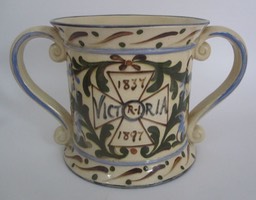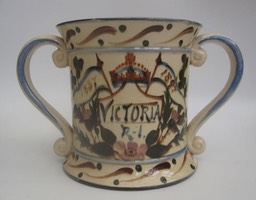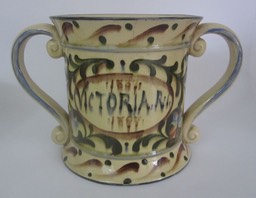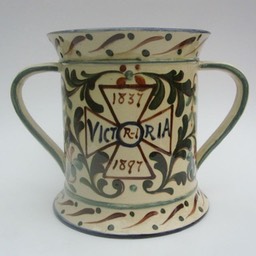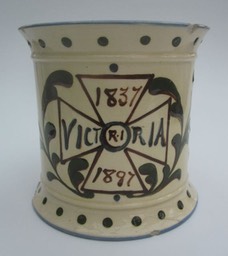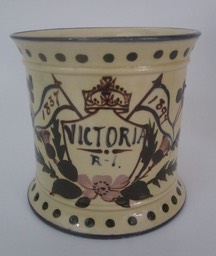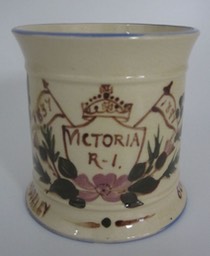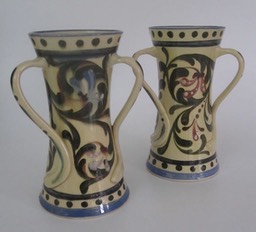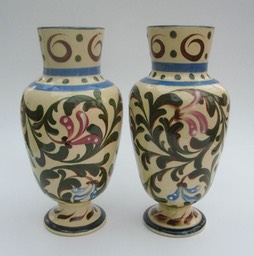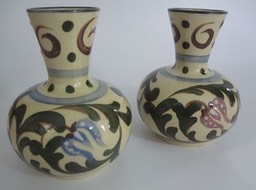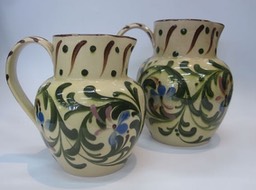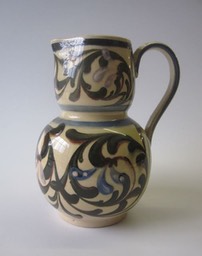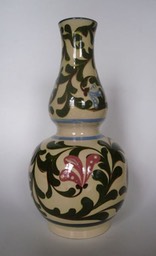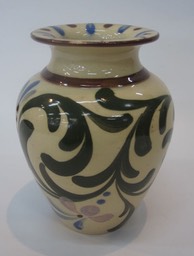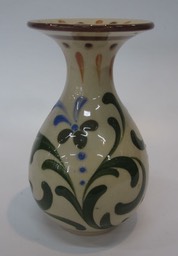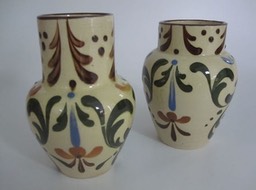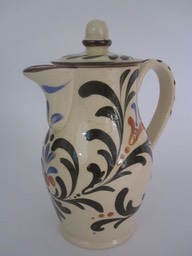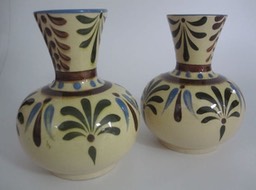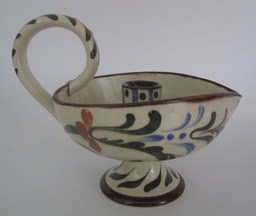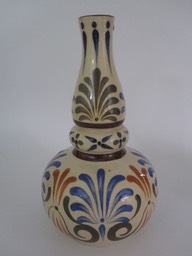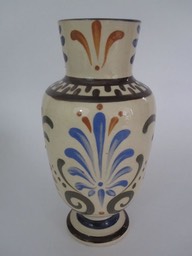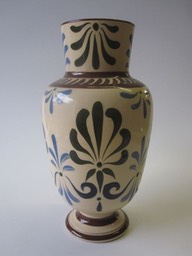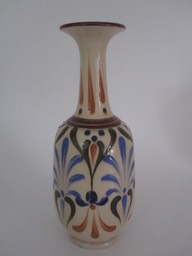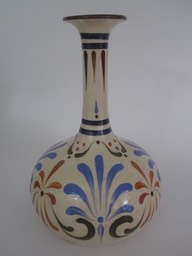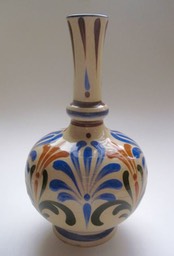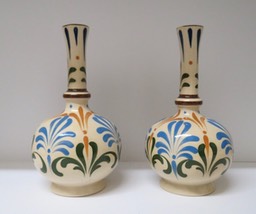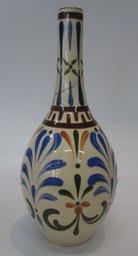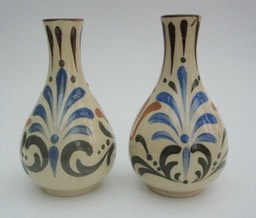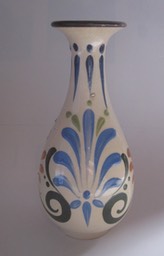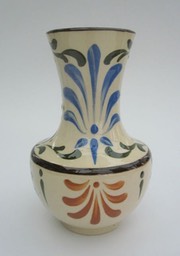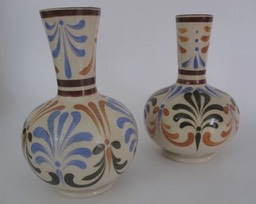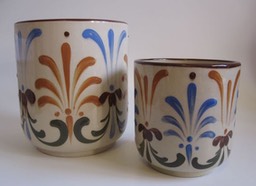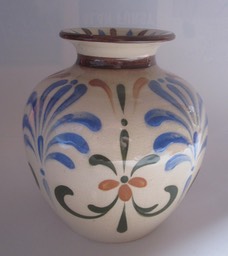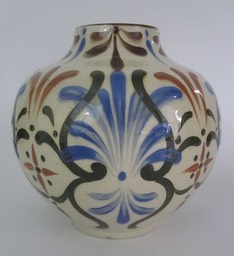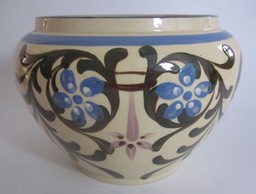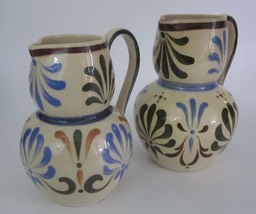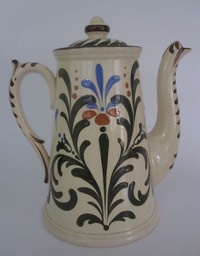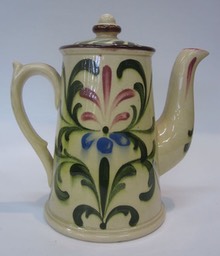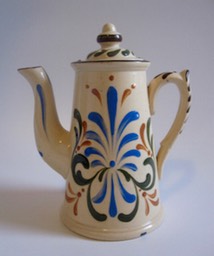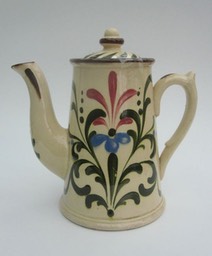- The Benthall Pottery Company produced a large range of Salopian Art Pottery with slip-painted designs over a cream body.
- Two periods of slip-painting can be recognised, based on the designs.
- Period 1 – asymmetric designs, c.1890s
Pieces painted in the late-19th century (c.1890s) are characterised by asymmetric designs of swirling green foliage, typically with dots, spirals and “lazy s” patterns to necks and bases. The colour palette is dark green, dark brown, blue, pinky-purple and white. - Slip-painted royal commemoratives produced for the 1897 Diamond Jubilee of Queen Victoria confirm a late-19th century date for Period 1 pieces.
- Period 2 – symmetrical designs, c.1920s
Pieces painted in the early 20th century (c.1920s) are characterised by symmetrical designs, typically based on a stylised version of the Classical anthemion (honeysuckle) flower. The colour palette is similar to that used on earlier pieces in the 1890s, but with the addition of brownish-orange. - Maud Whitmore (née Hall), a worker employed at Benthall Pottery c.1918–1924, interviewed in 1987, recalled how slip-painting in the 1920s was executed by Annie Shaw and two Misses Quinn
(Edmundson 2002). - There are similarities with slip-painted Aller Vale potteryfrom south Devon, particularly with that firm’s
A1 Persian and Scandy patterns. Salopian Art Pottery pieces are generally lighter in weight than Devon pieces, and are invariably marked SALOPIAN.
